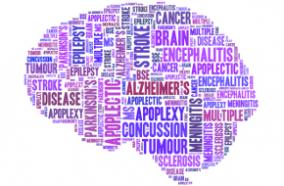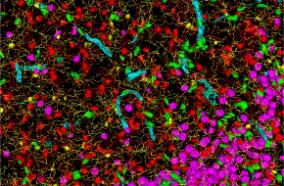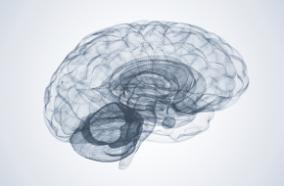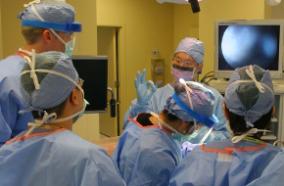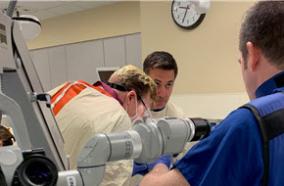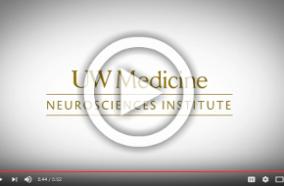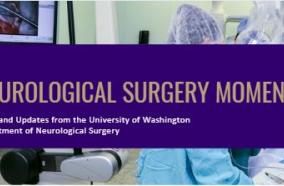1 year 1 month ago
CONCLUSION: RS patients are shown to have better outcomes to CP patients in terms of surgical, perioperative, and radiographic variables. Ambulatory status was identified as an independent risk factor for complications.
Vishal Sarwahi
1 year 1 month ago
BACKGROUND: Contemporary surgical practices for traumatic brain injury (TBI) remain unclear. We describe the clinical profile of an 18-centre US TBI cohort with cranial surgery.
John K Yue
1 year 1 month ago
CONCLUSIONS: The use of OVP significantly reduced the incidence of CDI during the in-hospital ASCT course without increasing CDI post-OVP use. These encouraging results should promote further research into the use of OVP in ASCT.
Michael J Williams
1 year 1 month ago
The control of the respiratory rhythm and airway motor activity is essential for life. Accumulating evidence indicates that the postinspiratory complex (PiCo) is crucial for generating behaviors that occur during the postinspiratory phase, including expiratory laryngeal activity and swallowing. Located in the ventromedial medulla, PiCo is defined by neurons co-expressing two neurotransmitter markers (ChAT and Vglut2/Slc17a6). Here, we mapped the input-output connections of these neurons using...
Luiz M Oliveira
1 year 1 month ago
Medulloblastoma and ependymoma are prevalent pediatric central nervous system tumors with significant molecular and clinical heterogeneity. We collected bulk RNA sequencing data from 888 medulloblastoma and 370 ependymoma tumors to establish a comprehensive reference landscape. Following rigorous batch effect correction, normalization, and dimensionality reduction, we constructed a unified landscape to explore gene expression, signaling pathways, gene fusions, and copy number variations. Our...
Sonali Arora
1 year 1 month ago
Mitochondrial dysfunction is thought to be a key component of neurodevelopmental disorders such as autism, intellectual disability, and attention-deficit hyperactivity disorder (ADHD). However, little is known about the molecular mechanisms that protect against mitochondrial dysfunction during neurodevelopment. Here, we address this question through the investigation of rbm-26, the Caenorhabditis elegans ortholog of the RBM27 autism candidate gene, which encodes an RNA-binding protein whose role...
Tamjid A Chowdhury
1 year 1 month ago
No abstract
Kim M Strupp
1 year 1 month ago
CONCLUSIONS: Vaccination of the eligible population would contribute to significant reductions in hospitalizations, deaths, and long COVID in the UK in the 2024-2025 season. Expanding the target population continues to be cost-effective. Use of the Moderna Autumn 2024 Campaign is predicted to reduce SARS-CoV-2 infections and associated outcomes in a cost-effective manner and will contribute to a more resilient healthcare system in the UK.
Michele Kohli
1 year 1 month ago
CONCLUSION: ACI is an effective durable treatment for cartilage defects, with high levels of patient satisfaction and low failure rates. No evidence was found that applying the periosteal patch at the time of chondrocyte harvest improved long-term Lysholm scores or survival until any re-operation or arthroplasty.
Georgios Orfanos
1 year 1 month ago
CONCLUSION: The SNAP score may be useful in predicting FR after EVT in low-ASPECTS patients with LVO. It can provide patients, family members, and physicians with reliable outcome expectations among patients with acute ischemic stroke with large infarcts.
Hidetoshi Matsukawa
1 year 1 month ago
CONCLUSION: We found no differences in radiological improvement, surgical rescue, or major complications between embolic materials in MMAE. Current randomized trials are exclusively using liquid embolics, and these data suggest that future trials involving particles are likely to produce similar outcomes.
Mohamed M Salem
1 year 1 month ago
CONCLUSION: Although endovascular embolization is the first-line treatment for most intracranial dAVFs, surgical ligation is an important alternative. ACF and tentorial fistulas particularly demonstrate high rates of postoperative obliteration.
Kunal P Raygor
1 year 1 month ago
BACKGROUND: Neonatal sepsis is a deadly disease with non-specific clinical signs, delaying diagnosis and treatment. There remains a need for early biomarkers to facilitate timely intervention. Our objective was to identify neonatal sepsis gene expression biomarkers that could predict sepsis at birth, prior to clinical presentation.
Andy Y An
1 year 1 month ago
The use of a surgical safety checklist can help prevent sentinel events; however, a lack of adherence to the checklist can result in inadequate preoperative patient readiness and negative outcomes. The purpose of this quality improvement project was to address preoperative concerns that prevent patient readiness in a military hospital. To change practice, the project involved the use of an evidence-based practice model and Kurt Lewin's change theory. The primary investigator provided an...
Sativa Tiva Franklin
1 year 1 month ago
Background/Objectives: Intracranial Epidermoid Cysts (IECs) are rare intracranial tumors primarily treated through surgery. Cyst adherence complicates complete removal, leading to high rates of tumor progression after subtotal resection. The molecular drivers of IEC remain unknown. Consequently, advances in treatment have fallen short. Tumor genetic profiling has revealed potential targets for drug development, including FDA-approved options and reshaping treatment. The genetic landscape of IECs...
Shruthi Kondaboina
1 year 1 month ago
CONCLUSIONS: Pending further study, this novel compound could potentially add to the repertoire of methods for inducing therapeutic nutritional ketosis.
Maricel A Soliven
1 year 1 month ago
In Brazil, agriculture consumes most of the available freshwater, especially in the Cerrado biome, where the rain cycle is marked by long periods of drought. This study, conducted at the Brazilian Agricultural Research Corporation (Embrapa) Research Corporation unit in Santo Antônio de Goiás, Goiás, Brazil, estimated evapotranspiration (ET) in different crops and soil cover. Using multispectral unmanned aerial vehicle (UAV) images, Sentinel satellite data, weather station information, and towers...
Gabriella Santos Arruda de Lima
1 year 1 month ago
Malaria, caused by Plasmodium parasites, imposes a significant health burden and live-attenuated parasites are being pursued as vaccines. Here, we report on the creation of a genetically attenuated parasite by the deletion of Plasmodium LINUP, encoding a liver stage nuclear protein. In the rodent parasite Plasmodium yoelii, LINUP expression was restricted to liver stage nuclei after the onset of liver stage schizogony. Compared to wildtype P. yoelii, P. yoelii LINUP gene deletion parasites...
Debashree Goswami
1 year 1 month ago
CONCLUSIONS: The present systematic review and meta-analysis demonstrated that short-term mortality, operative time, and admission [intensive care unit (ICU) and overall length of stay] outcomes were encouraging in the Atlantic demographic. Freedom from long-term mortality assessment of a smaller cohort showed encouraging results. A major caveat to the present analysis is the high degree of heterogeneity in the reporting of data. Analysis of future randomized controlled trials will be vital in...
Ashley R Wilson-Smith
1 year 1 month ago
Precision oncology is driven by biomarkers. For glioblastoma multiforme (GBM), the most common malignant adult primary brain tumor, O⁶-methylguanine-DNA methyltransferase (MGMT) gene promoter methylation is an important prognostic and treatment clinical biomarker. Time-consuming preanalytical steps such as biospecimen storage, fixation, sampling, and processing are sources of data irreproducibility, and all these preanalytical variables are confounded by intratumor heterogeneity of MGMT promoter...
Karol Bomsztyk
"university of washington"[affiliation] and neurological surge...: Latest results from PubMed
More posts about UW Neurological Surgery Recent PubMed Publications



